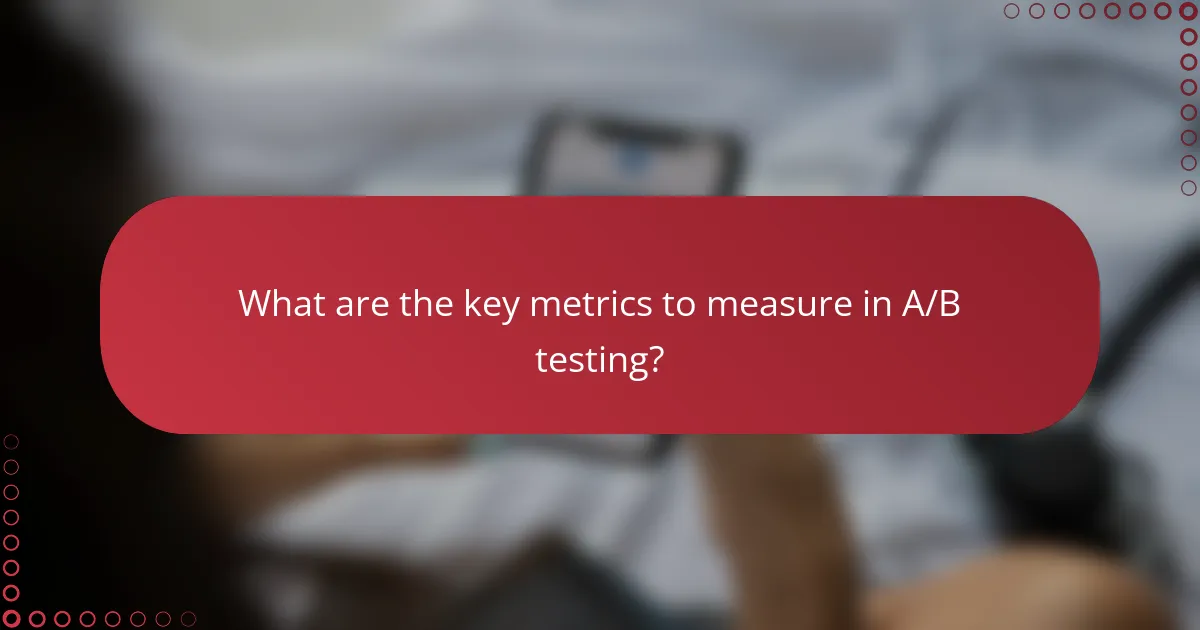Effective A/B testing methods for Russian display ads are essential for marketers aiming to optimize ad performance and maximize conversion rates. By systematically comparing different ad variations, these methods enable data-driven decisions that resonate with the target audience, ultimately enhancing engagement and effectiveness.

What are effective A/B testing methods for Russian display ads?
Effective A/B testing methods for Russian display ads include various strategies that help marketers determine which ad variations perform best. These methods allow for systematic comparisons to optimize ad effectiveness and improve conversion rates.
Multivariate testing
Multivariate testing involves testing multiple variables simultaneously to identify the best-performing combination. For example, you might test different headlines, images, and calls to action within the same ad. This method can provide insights into how various elements interact, but it requires a larger sample size to yield statistically significant results.
When using multivariate testing, ensure that your traffic is sufficient to support multiple variations. A common pitfall is testing too many variables at once, which can dilute results and complicate analysis.
Split URL testing
Split URL testing directs users to different URLs for each variation of the ad, allowing for comprehensive analysis of entire landing pages. This method is particularly useful when testing major changes, such as different layouts or content strategies. For instance, one ad might lead to a product page while another directs to a promotional landing page.
To implement split URL testing effectively, ensure that each URL is optimized for the target audience. Avoid making minor tweaks between pages, as significant differences yield clearer insights into user preferences.
Sequential testing
Sequential testing involves running tests one after another rather than simultaneously. This approach allows for adjustments based on the results of the previous test before launching the next variation. For example, if an ad with a specific image performs well, you might then test different headlines using that same image.
While sequential testing can provide valuable insights, it may take longer to reach conclusions. Be mindful of external factors that could influence results over time, such as seasonal trends or market changes.
Time-based testing
Time-based testing evaluates ad performance over different time periods to identify optimal times for engagement. For instance, you might test ads during weekdays versus weekends or during specific hours of the day. This method helps to uncover patterns in user behavior that can inform scheduling strategies.
When conducting time-based testing, consider the cultural context of your audience in Russia, as local holidays or events may significantly impact ad performance. Use analytics to track performance metrics during various time frames for accurate comparisons.
Geotargeted testing
Geotargeted testing focuses on delivering different ad variations to users based on their geographic location. This method is particularly effective in a diverse market like Russia, where regional preferences and behaviors can vary widely. For example, an ad might emphasize local promotions or products that resonate more with users in Moscow compared to those in Siberia.
To maximize the effectiveness of geotargeted testing, tailor your messaging and visuals to reflect local culture and preferences. Monitor performance metrics across regions to identify which variations yield the best results, allowing for more targeted marketing efforts.

How can A/B testing improve ad performance in Russia?
A/B testing can significantly enhance ad performance in Russia by allowing marketers to compare different versions of display ads to determine which one resonates better with the target audience. This data-driven approach helps in making informed decisions that lead to higher engagement and conversion rates.
Increased click-through rates
Implementing A/B testing can lead to increased click-through rates (CTR) by identifying which ad elements attract more attention. For example, testing different headlines, images, or calls-to-action can reveal preferences among Russian consumers, allowing for tailored content that drives clicks.
To maximize CTR, focus on testing one variable at a time, such as color schemes or wording. This method provides clearer insights into what specifically influences user behavior, enabling more effective ad designs.
Enhanced user engagement
A/B testing enhances user engagement by allowing advertisers to refine their messaging and visuals based on audience reactions. Engaging ads that resonate with users can lead to longer interaction times and increased brand loyalty.
Consider testing different formats, such as static images versus animated graphics, to see which captures more attention. Engaging content that aligns with local cultural nuances can significantly improve interaction rates among Russian audiences.
Optimized conversion rates
Through A/B testing, businesses can optimize conversion rates by identifying the most effective ad versions that lead to desired actions, such as purchases or sign-ups. By analyzing user behavior, marketers can adjust their strategies to enhance the overall effectiveness of their campaigns.
For best results, track key performance indicators (KPIs) like conversion rates and average order value. Regularly testing and iterating on ad designs based on these metrics can lead to sustained improvements in campaign performance in the competitive Russian market.

What tools are recommended for A/B testing in display advertising?
Several tools are effective for A/B testing in display advertising, each offering unique features and capabilities. Choosing the right tool depends on your specific needs, budget, and the level of complexity you require.
Google Optimize
Google Optimize is a popular choice for A/B testing due to its integration with Google Analytics. It allows users to create experiments that can test different versions of ads, landing pages, and more, making it easy to analyze performance metrics.
Consider using Google Optimize if you are already familiar with the Google ecosystem. The tool is free for basic features, but advanced capabilities are available through the paid version, Google Optimize 360.
Optimizely
Optimizely is a robust A/B testing platform that provides a user-friendly interface and powerful analytics. It supports multivariate testing, allowing you to test multiple variables at once, which can yield more comprehensive insights.
This tool is ideal for larger organizations with complex testing needs. Optimizely offers a range of pricing plans, so assess your budget and required features before committing.
VWO
VWO (Visual Website Optimizer) is another effective A/B testing tool that emphasizes ease of use. It offers features like heatmaps and session recordings, which help you understand user behavior alongside your A/B tests.
VWO is suitable for businesses looking for a holistic approach to conversion optimization. Pricing varies based on the features you choose, so consider starting with a trial to see if it meets your needs.
Adobe Target
Adobe Target is part of the Adobe Experience Cloud and is designed for enterprises that require advanced targeting and personalization capabilities. It supports A/B testing as well as automated personalization, which can enhance user engagement.
This tool is best for organizations that already use Adobe products and need a comprehensive solution for testing and optimizing their display ads. Keep in mind that Adobe Target typically comes with a higher price tag, reflecting its extensive features.

What are the key metrics to measure in A/B testing?
Key metrics in A/B testing help evaluate the effectiveness of different ad variations. Focus on metrics that directly reflect user behavior and financial performance to make informed decisions.
Conversion rate
The conversion rate measures the percentage of users who complete a desired action after interacting with an ad. This could include making a purchase, signing up for a newsletter, or downloading an app. A higher conversion rate indicates that the ad effectively resonates with the target audience.
To calculate the conversion rate, divide the number of conversions by the total number of visitors and multiply by 100. For example, if 1000 people view the ad and 50 make a purchase, the conversion rate is 5%. Aim for a conversion rate that aligns with industry benchmarks, which can vary widely.
Return on ad spend (ROAS)
Return on ad spend (ROAS) measures the revenue generated for every unit of currency spent on advertising. This metric is crucial for assessing the financial viability of your campaigns. A ROAS of 4:1 means that for every 1 RUB spent, 4 RUB are earned back.
To calculate ROAS, divide the total revenue from the ad campaign by the total ad spend. For instance, if you spend 10,000 RUB and generate 50,000 RUB in revenue, your ROAS is 5. This metric helps determine whether your ad strategies are profitable and guides budget allocation.
Engagement metrics
Engagement metrics include various indicators of how users interact with your ads, such as click-through rates (CTR), likes, shares, and comments. High engagement often correlates with effective messaging and creative design. Monitoring these metrics can provide insights into audience preferences.
For example, a CTR of 2-5% is generally considered good for display ads. Analyzing engagement can help refine your targeting and creative strategies, ensuring your ads resonate with the intended audience.
Bounce rate
The bounce rate indicates the percentage of visitors who leave a landing page without taking any further action. A high bounce rate may suggest that the landing page does not meet user expectations or that the ad targeting is off. Reducing bounce rates can lead to improved conversion rates.
To calculate the bounce rate, divide the number of single-page visits by the total number of visits and multiply by 100. A bounce rate below 40% is often seen as favorable. Consider optimizing landing pages for better user experience and alignment with ad content to lower bounce rates.

What prerequisites are needed for effective A/B testing?
Effective A/B testing requires clear objectives, a defined target audience, and a focus on statistical significance. These prerequisites ensure that the tests yield reliable and actionable insights for optimizing Russian display ads.
Clear objectives
Establishing clear objectives is essential for A/B testing. Define what you want to achieve, such as increasing click-through rates (CTR) or improving conversion rates. Specific goals help in designing tests that are focused and relevant.
For instance, if your objective is to boost CTR, consider testing different headlines or images in your ads. This clarity allows you to measure success accurately and make informed decisions based on the results.
Defined target audience
Identifying a defined target audience is crucial for effective A/B testing. Knowing who your ads are aimed at helps tailor the messaging and design to resonate with that specific group. This increases the likelihood of engagement and conversion.
For example, if your target audience consists of young professionals in Moscow, your ads should reflect their interests and preferences. Segmenting your audience can also allow for more precise testing, enabling you to compare responses from different demographics.
Statistical significance
Achieving statistical significance is vital to validate your A/B testing results. This means that the differences observed between variations are unlikely to be due to random chance. Aim for a confidence level of at least 95% to ensure reliable outcomes.
To determine statistical significance, use tools or calculators that analyze your test data. A common rule of thumb is to run tests long enough to gather sufficient data, typically several hundred to a few thousand interactions, depending on your audience size.


